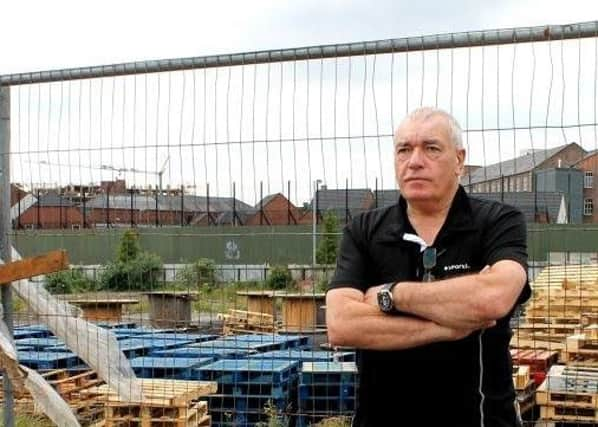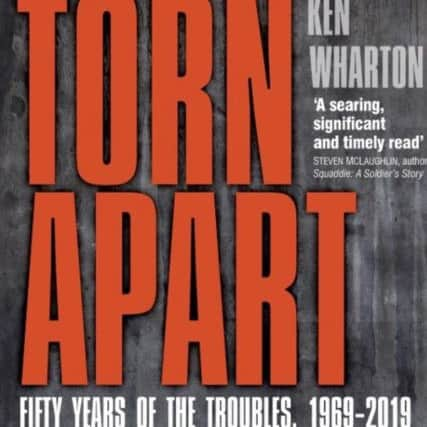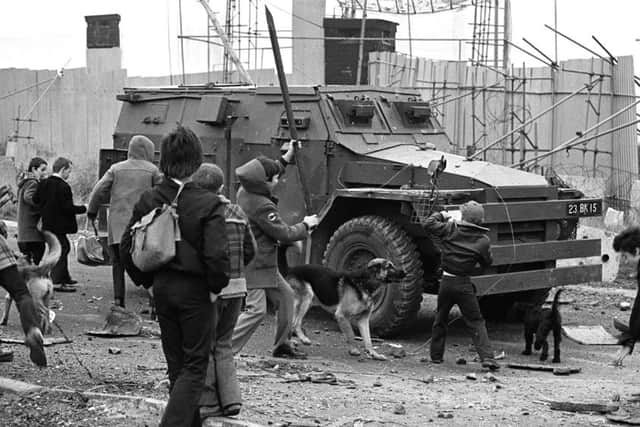Torn Apart: ex-soldier Ken Wharton publishes overview of 50 years since outbreak of Troubles


His most challenging project yet, this time he consciously attempted to set his own opinions aside and engaged nationalist opinion on the past five decades.
“I don’t think any of us knew what to expect when we arrived,” he said. “A lot of British soldiers went out with a great deal of naivety. We were starting to hear reports of Catholics and Protestants in some sort of sectarian conflict.
Advertisement
Hide AdAdvertisement
Hide Ad“What most surprised me was that it was a part of the UK where policemen carried guns.


“When I went the first time it was the post honeymoon period where the hatred and division had already set in. We missed out the honeymoon period of tea and sandwiches and it became bullets bombs and cups of tea.”
And that became the title of his first book: Bullets Bombs And Cups Of Tea’.
“It left me incredibly sad and stayed with me all my life.
“Two close friends were shot dead by the IRA in Belfast and one friend took his own life in October 1969 in the city.
Advertisement
Hide AdAdvertisement
Hide Ad

“I got off with one or two stone throwing injuries, a couple of burns from petrol bombs and one or two bruises.”
He has written 11 books on the Troubles and this will be his final volume.
His publisher The History Press asked him to do a 50 year overview of the Troubles.
“I like to think I have analysed virtually every seminal moment of the Troubles: Internment, various atrocities, The Abercorn bombing, La Mon, Droppin Well, Kingsmills, Teebane.”
Advertisement
Hide AdAdvertisement
Hide AdThe book also has a section on loyalist atrocities including that of the Reavey brothers in 1976.
The Final chapter is Northern Ireland today.
“I have shown it to a lot of people who live in NI and I have had some very good feedback, looking back 50 years after the Troubles first started.
“One thing I find very depressing is the Sinn Fein narrative of rewriting the history of the Troubles to gloss over the IRA campaign that lasted for 30 years or more.”
In his view, his last book has a number of fresh elements to bring to the well stocked shelves of Troubles tomes.
Advertisement
Hide AdAdvertisement
Hide Ad“What I am bringing to the table is a collection of my own and other people’s experiences, mainly of the security force side, because there weren’t many books available that looked at the Troubles from the perspective of the soldier, or the policeman. So I look at the 50 year overview from the perspective of the security forces but also bringing into it views of moderate Catholics and Protestants.
“In the previous books, certainly in my early days, it was purely from the perspective of the security forces. But as I have written more and more, I have realised there are other sides of he story as well.
“So where I took a fairly partisan view in my early books, what I am trying to do in this one is to try and be more objective because if I want to be taken seriously as a military historian I have had to temper my personal feelings and try to be as objective as I could be.”
He adds: “I have tried not to have been as opinionated as I have been in previous books when I have discussed PIRA, INLA UFF, UVF atrocities.”
Advertisement
Hide AdAdvertisement
Hide AdAs a result he draws in both Catholic and Protestant voices regarding the forced populations moves of the Troubles.
“I have looked at internment day in August 1971. I have looked at the exodus of Catholics from Protestant areas and vice versa. I have looked at ethnic cleansing and tried to draw parallels with the Yugoslavian civil war and the Nazis. Clearly what happened in NI was nothing like on that scale but it was form of ethnic cleansing which I find quite obscene.
“I have looked at how Protestants were hounded out of the Springfield Road in Belfast and I have looked at how the few Catholics who were in Protestant areas were also forced out...the way Catholics were bombed out of Bombay street.”
Brought up a Jehovah’s Witness, he broke away aged 15 and feels one step removed from what he sees as the religious divisions of NI.
Advertisement
Hide AdAdvertisement
Hide Ad“Yes I can’t disguise the fact that I was a soldier and that I am English. What I would say is that I have tried to observe through the eyes of somebody who was neutral.
“After reading my first book my sister-in law asked ‘did I hate Irish people and Catholics?’.
“The answer is emphatically ‘no’ on both counts. I don’t hate the Irish. Why would I? I don’t hate Catholics, I don’t hate any religion.”
In his 12th and final book Ken Wharton concludes, sadly, that despite relative peace, little has changed in Northern Ireland.
Advertisement
Hide AdAdvertisement
Hide AdAfter treading through cemeteries across Northern Ireland and Great Britain, he concludes that the graves of those who lost their lives “bear silent testimony to utter bankruptcy of the paramilitary philosophy of violence”.
“Of one thing I am more than certain. Long after my own personal demise, other historians will commemorate the start of the Troubles by writing a 100th anniversary, finding in 2069 that Northern Ireland still hasn’t moved on a century after the death of poor little Patrick Rooney, killed in his bedroom in the Divis Street area.”
“The violence has stopped but the paramilitaries are still the main authorities. The only difference is that they are a little younger now.”
• ‘Torn Apart: 50 Years of the Northern Ireland Troubles’ (The History Press, 2019) by Ken Wharton is on sale now.